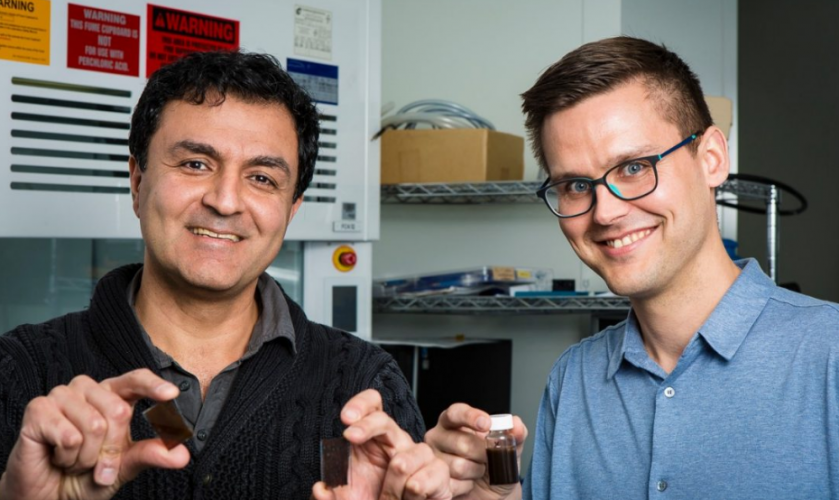Dubbed ‘solar paint’, the material contains synthetic molybdenum-sulphide, a newly developed compound that removes moisture from the surrounding air in a similar way to silica gel. As well as collecting the water, the material also acts as a semiconductor, photo-catalysing the H2O atoms to split into hydrogen and oxygen. The work is published in the journal ACS Nano.
“We found that mixing the compound with titanium oxide particles leads to a sunlight-absorbing paint that produces hydrogen fuel from solar energy and moist air,” said lead researcher Dr Torben Daeneke, from RMIT’s School of Engineering.
“Titanium oxide is the white pigment that is already commonly used in wall paint, meaning that the simple addition of the new material can convert a brick wall into energy harvesting and fuel production real estate.”
According to the researchers, the discovery brings a number of advantages. Remote areas far from large bodies of water could still produce fuel, so long as there was water vapour in the air. Daeneke’s colleague, Professor Kourosh Kalantar-zadeh, believes the solar paint could be particularly useful under certain climatic conditions.

Professor Kourosh Kalantar-zadeh and Dr Torben Daeneke with a pot of solar paint and a piece of glass with the paint applied (Credit: RMIT)
“This system can also be used in very dry but hot climates near oceans,” he said. “The sea water is evaporated by the hot sunlight and the vapour can then be absorbed to produce fuel.”
“This is an extraordinary concept – making fuel from the sun and water vapour in the air.”





April 1886: the Brunkebergs tunnel
First ever example of a ground source heat pump?